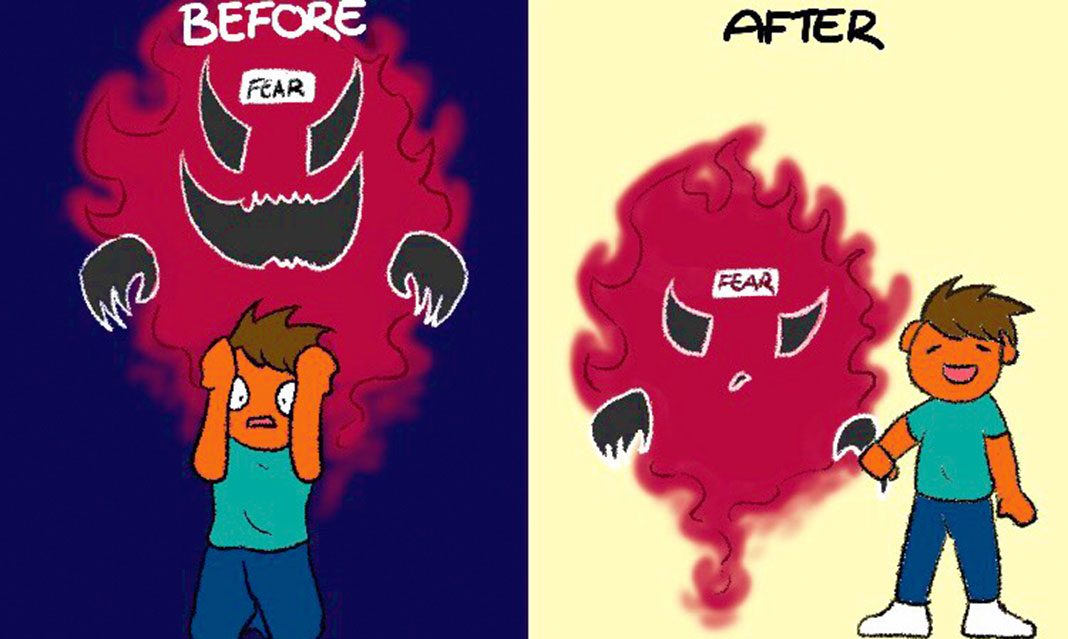Many students struggle with anxiety caused by a variety of things, including relationships, family, and academics. Apart from therapy and counselling, medication is often presented to help deal with the anxiety. Regardless of the type of treatment recommended to an individual, having hope may be the key to help them overcome their anxiety disorders.
A recent study performed by Matthew Gallagher from the University of Houston explored the extent to which hope plays a role in recovering from anxiety disorders. Hope is often confused with the idea of optimism, but, for the purposes of the study, hope is described as the ability to establish the steps needed to achieve goals and follow the plan effectively by overcoming the obstacles that appear in the path.
The study aimed to “(a) quantify the magnitude and timing of the impact of cognitive behavior therapy (CBT) on hope, (b) examine the extent to which changes in hope during CBT were consistent across principal diagnosis and treatment protocol, and (c) examine the extent to which intraindividual changes— the changes that occur within an individual—in hope predicted changes in self-reported and clinician-rated anxiety outcome.”
The study was conducted on 223 individuals between the ages of 18 and 66 who were being treated at an outpatient clinic for one of four anxiety disorder. Each individual was randomly assigned to a transdiagnostic CBT group, a disorder-specific CBT group, or a waitlist-controlled condition group. For all the conditions, assessments occurred during the baseline session, session four, session eight, session 12, and session 16. A six-month follow-up assessment was performed for individuals who remained in active treatment conditions.
The level of hope in individuals was measured using The State Hope Scale. Clinician-rated levels of anxiety were evaluated using the Hamilton Anxiety Rating Scale. Self-reported levels of anxiety were measured using the Overall Anxiety Severity and Impairment Scale.
The first analysis performed for this study involved calculations that indicated increases in hope were a result of disorder-specific and transdiagnostic CBT (focuses on commonalities between anxiety disorders). CBT conditions showed greater changes in hope than other conditions. Furthermore, levels of hope increased over time from the initial baseline assessment to the six-month follow up assessment.
The second analysis focused on when hope changes in CBT. The results showed that changes in hope began early in treatment in CBT, however, the change in hope in the first four weeks of treatment for the waitlist condition was negligible.
The third analysis performed showed that there were small increases in hope across both transdiagnostic and disorder-specific protocols and the amount of change in hope was similar across all four anxiety disorders being tested: panic disorder, generalized anxiety disorder, social phobia and obsessive-compulsive disorder.
The models showed that the correlation between changes in anxiety and changes in hope are consistent throughout the treatment phase and until the six-month follow-up assessment.
The final analysis investigated “the indirect effect of the treatment on intraindividual changes in clinician-rated and self-reported anxiety using intraindividual changes in hope.” These results showed the importance of intraindividual changes in hope during CBT in predicting changes in anxiety levels.
Overall, the results of the study supported the initial hypothesis that hope is a transdiagnostic mechanism that encourages beneficial changes in symptoms across all forms of treatment conditions. The results of the study also showed that there is a strong relationship between changes in levels of hope and levels of anxiety symptoms.
The findings of this study show how important hope and other processes will aid in understanding the recovery process of patients recovering from anxiety disorders. Physicians will be able to modify their care to better help patients as well. Knowing that something as simple as having hope throughout treatment is beneficial and will encourage individuals dealing with anxiety disorders. Even though progress may not be visible to them immediately, this research shows them that with hope, individuals are still making progress in their recovery.



